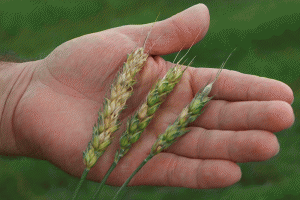Business side: On-farm fire prevention
CONVERSATIONS WITH BUSINESS EXPERTS

(J.M.) WHAT ADVICE CAN YOU GIVE ONTARIO FARMERS TO MANAGE THE RISK OF FIRE?
(J.Z.) There are four main contributors or (causes) to on-farm fires — faulty electrical/mechanical equipment, heating equipment, misuse of ignition sources, and mobile machinery. Electrical is the largest single cause of barn and machinery shed fires and approximately 40% of all farm building fires are caused by electrical faults. Electrical fires can result from risk factors like stress on electrical systems such as load imbalances resulting from an operation expansion, loose connections or short circuits, faulty equipment, and rodent damage to recessed or unprotected wiring in walls and attic areas. Corrosion or deterioration of electrical equipment is a major factor caused by wet humid environments and corrosive gases that destroy electrical equipment, particularly in confined livestock facilities that use general purpose electrical equipment.
It’s important to ensure extension cords are in good shape. Permanent and regular use of extension cords can lead to open ignition sources.
Heating equipment is another major contributor to fire, especially during cold weather. It’s convenient and easy to use portable space heaters but the low cost, readily available 30amp 4.8KW barn heaters used are generally not designed as a permanent heating source. Farmers should source heating equipment designed for agricultural purposes.
Mobile machinery that creates dusty conditions can cause large scale agricultural fires. Sparks from mobile equipment in use or faulty electrical systems create a dangerous combination. Onboard electrical shorts on mobile equipment can also lead to fires.
Fires are serious and difficult for a business to fully recover from. There are risk management measures farmers can take to reduce fires on farms and agri-businesses. Early detection is the key to prevention.
HOW CAN FARM BUSINESS OWNERS REDUCE THE RISK OF FIRES ON THE FARM?
I recommend regular facility inspections to assess fire hazards. Farm owners should approach an inspection as preventative maintenance and include an advisory or specialist team. Risk management, including fire prevention, should be a team approach on the farm. Farm business owners can conduct their own risk inspections, but I recommend including the insurance company and a licensed electrician. Many insurance companies offer loss prevention, or risk assessment services, to help farm business owners identify fire hazards and provide corrective solutions.
Depending on the size of the farm and type of operation, farmers should be open to inspections every three years and annually for large farm or agri-commercial facilities using heavy electrical demands. During inspections we always recommend farmers involve their own licensed electrician to help identify any problems and in many cases, issues can be fixed immediately during the inspection process.
WHAT IS LOSS PREVENTION?
Loss prevention is an insurance term — Heartland views it as a value added service helping client’s manage risk and protect what they value most. Loss prevention and risk management inspections on the farm and in agri-commercial businesses today are more important than ever as farm businesses move at a faster and ever expanding pace and have become more high tech.
The service is designed to work in partnership with farm business owners to help manage risks. Inspectors generally have a wealth of knowledge and expertise in electrical, heating, mechanical, and structural. They are also certified technicians in areas such as electrical, thermal imaging, WETT solid fuel burning appliances, fuel oil and generator installations.
Assessments, or on-farm inspections, are typically a team approach between the farmer, risk assessment specialist, and a licensed electrician. Inspections are conducted during peak business hours on the farm when the electrical load is at its peak, such as during harvest on a grain operation, to identify serious electrical issues. These are usually corrected immediately, with the electrician on hand, or farmers are left with a report that identifies serious hazards.
Loss prevention should be viewed as a value added preventative maintenance program that farmers can utilize as part of their ongoing risk management. It also eliminates costly breakdowns and can help control insurance costs. A solid on-farm risk management approach can enhance the overall value of the operation and help in future operational expansions or in financial negotiations.
CAN YOU RECOMMEND ANY RESOURCES?
I recommend working with your own on-farm risk management team and contacting your insurance company about loss prevention and risk assessment services. To reduce fire exposure, always consult with your licensed electrician about electrical improvements. Refer to industry best practices such as ESA Electrical Safety Authority (Bulletin 22-3-5) for electrical information about equipment in barns for electrical upgrades and repairs or changes to existing or new facilities. The Ontario Ministry of Agriculture, Food and Rural Affairs website (omafra.gov.on.ca) offers a great resource page on Reducing The Risk Of Fire On Your Farm and an Electrical Systems in Barns factsheet. •



























